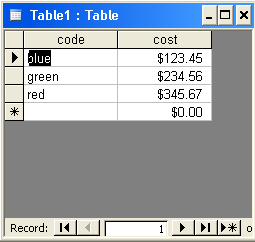

Using CabMasterPro's middleware functions for database access, you can retrieve values and even update a Microsoft Access database. This lets you integrate your custom libraries directly with costing and stock databases that may already be in use in your operation.
CabMasterPro shares database connections for performance, ensuring there is only ever one connection to each database. And the connection is held once open, until CabMasterPro closes, also for performance. You should always lookup values using database indexes and parameterised queries, again for performance reasons.
All the database middleware functions support databases in SQLite format, in addition to Microsoft Access (mdb and accdb) plus other database formats where there are OLEDB Windows drivers. SQLite is a simple and very widely used format, described here: https://sqlite.org
It is the most used database format in the world, built into all mobile phones and supported cross platform on most computers. It is public domain and free.
There are useful free utilities such as SQLite Studio here: https://sqlitestudio.pl/
Refer to topic on Database Functions available for database manipulation, updated v12.0.0.131 [July 2025]. This change means that you only need to specify the path of the .db file relative to the TableFolder, not the full path (however, the full path is still supported).
 For an example of these functions in use extract the zip file database.zip (click to open) to your CabMasterPro directory (where CabMasterPro.exe is found) then load "DatabaseSample.qid" (found inside the zip) into CabMasterPro.
For an example of these functions in use extract the zip file database.zip (click to open) to your CabMasterPro directory (where CabMasterPro.exe is found) then load "DatabaseSample.qid" (found inside the zip) into CabMasterPro.
This example drawing shows four different simple examples of how to use database calls in your function. It uses the data inside abc.mdb, which can be viewed using Microsoft Access. The commands used are: